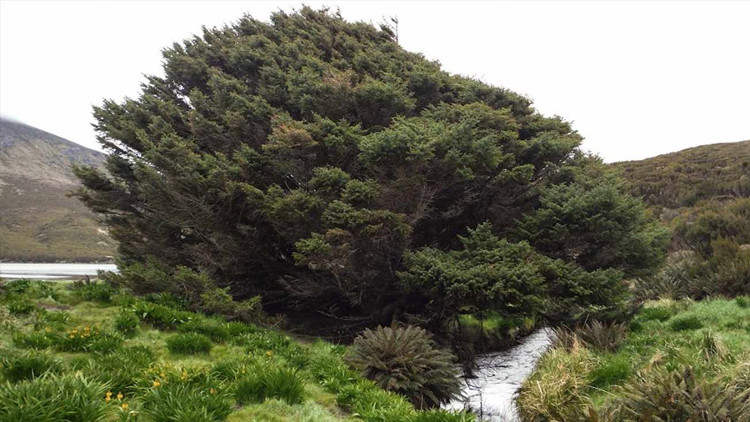The world's most lonely 'tree' reveals the beginning of geology
The latest evidence of Earth's geological beginnings in 1965 is found on the only spruce in a Pacific island.
Chris Turney, professor of Earth Science and Climate Change at the University of New South Wales, Australia, and colleagues discovered the concentration of radioactive carbon in the atmosphere of the Earth reached its maximum in 1965. They said that This can be seen as the starting point of the new geological landscape which is still controversial called Anthropocene. The findings are published in Scientific Reports on February 19, according to Live Science.
Scientists examined the radioactive isotope carbon-14 in the small core of a Sitka spruce (Picea sitchensis) on Campbell Island, New Zealand. This is a remote, remote island located on the Pacific Ocean. The only Sitka spruce taller than 9 meters on the island was planted by Lord Ranfurly, a former Governor of New Zealand, in 1907.

Sitka spruce on Campbell Island.(Photo: Pavla Fenwick).
Carbon-14 is a radioactive isotope of carbon with a half-life of nearly 6,000 years. It was introduced into the stratosphere of the Earth by ground-based nuclear weapons tests, starting in 1945. Plants absorb carbon when they photosynthesize and grow, so the highest concentration of carbon -14 will leave a mark on the cellulose composition of Sitka spruce.
The results showed that the concentration of carbon-14 in the atmosphere reached the highest level in mid October - December 1965. Radioactive carbon could become a global signal used to identify the impact of humans on planet Earth.
Native plants living on Campbell Island also show similar data. The research team examined carbon-14 content in two species of perennial shrubs with the scientific name of Dracophyllum scoparium and Dracophyllum longifolium . Some trees date from the late 1800s and are up to 5m tall compared to the surrounding landscape. The results showed that they also recorded an increase in radioactive carbon in the atmosphere starting in 1954 and peaking in the growing season from 1965 to 1966.
Over the years, the scientific community has made some suggestions about the transition to the geological Anthropocene , such as the strange increase of greenhouse gases about 8,000 years ago (coinciding with the time of human started deforestation and rice cultivation, or an increase in the concentration of CO 2 in the atmosphere began in the mid-1800s due to the Industrial Revolution. Another potential sign of anthropocene geology could be the dramatic explosion in population or the accelerated growth of the Great Acceleration after World War II.
- Story of the most lonely acacia tree on the planet
- The story of ancient oak 'matchmaking' for 100 lovers but is always lonely
- The most lonely minnows in the world
- What is the most lonely human being?
- 8 countries 'most lonely' in the world
- Kingdonia uniflora one-leaf grass - The most lonely tree
- The most lonely bird on the planet is dead
- The life of the most lonely animals on the planet
- The oldest tree in England has changed sex after 3,000 years
- Do you know where to be lonely and away from the most people on Earth?
- Loneliness makes people stress chronic
- Ancient trees have unique and strange shapes all over the world
 Why do potatoes have eyes?
Why do potatoes have eyes? 'Tragedy' the world's largest carnivorous life: Death becomes ... public toilet
'Tragedy' the world's largest carnivorous life: Death becomes ... public toilet Tomatoes were once considered 'poisonous' for 200 years
Tomatoes were once considered 'poisonous' for 200 years Detecting microscopic parasites on human face
Detecting microscopic parasites on human face